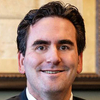Directed Trusts in Estate Planning: New State Law Changes, Critical Structuring Issues, Advising Fiduciaries

Course Details
- smart_display Format
On-Demand
- signal_cellular_alt Difficulty Level
- work Practice Area
Estate Planning
- event Date
Tuesday, May 12, 2020
- schedule Time
1:00 p.m. ET./10:00 a.m. PT
- timer Program Length
90 minutes
-
This 90-minute webinar is eligible in most states for 1.5 CLE credits.
This CLE course will provide an in-depth analysis of critical issues in using and structuring directed trusts in estate planning and advising fiduciaries on potential legal implications. The panel will discuss key considerations in determining when a directed trust is appropriate, critical provisions when drafting trust documents, converting existing trusts to directed trusts, assigning duties, avoiding unintentional fiduciary classifications, and navigating state law challenges.
Faculty

With more than 15 years in financial services, Mr. Kadavy's professional expertise includes consulting with high-net-worth individuals regarding complex estate and financial planning needs and the administration of personal and charitable trusts.

Mr. Metzner counsels individuals and families throughout the United States and internationally with their tax, estate and private wealth planning needs, guiding them through the maze of laws and practical considerations, moving each client closer to achieving goals and resolving outstanding issues.
Description
Directed trusts are being utilized with increased frequency and provide the opportunity to split trust functions between a trustee and one or more “trust directors". An increased number of states have enacted a version of the Uniform Directed Trust Act (UDTA) since 2018, and trusts and estates attorneys must recognize critical issues regarding the fiduciary status of non-trustees and pitfalls to avoid in structuring directed trusts.
A directed trust allows trust settlors to involve family members in the administration of a trust when appropriate but to use professionals to ensure compliance with fiduciary duties, provide professional investment management, deal with contentious beneficiary relationships, manage complex assets, and provide independent judgment concerning discretionary distribution decisions.
While most states have statutes authorizing directed trusts, there is significant uncertainty as to the fiduciary status of trust directors and the extent of fiduciary liability exposure for directed trustees. The passage of the UDTA and its adoption by several states provide clarity and standardize the fiduciary treatment and rules governing trust directors. The UDTA also offers drafting guidance on issues often overlooked in structuring directed trusts. Estate counsel should have a thorough understanding of these rules for directed trusts to provide greater flexibility for grantors.
Listen as our authoritative panel discusses the benefits of directed trusts as an estate planning strategy, explains critical considerations in determining when a directed trust is appropriate, highlights issues when converting existing trusts to directed trusts, outlines how to avoid unintentional fiduciary classifications, and provides guidance in navigating state law challenges.
Outline
- Challenges in the use of directed trusts as a planning vehicle
- Critical terms and provisions of directed trusts
- Fiduciary rules governing trust directors and directed trustees
- UDTA and state approaches to directed trusts
- Best practices for drafting and modifying existing directed trusts
Benefits
The panel will review these and other key issues:
- What are the key states' approaches to directed trusts?
- What are the statutory requirements for structuring directed trusts?
- What are the benefits and fiduciary and tax risks in using directed trusts?
- What are the critical terms and provisions to consider in structuring directed trusts?
- What are the challenges of converting an existing trust to a directed trust?
- How can directed trusts be used for special needs trusts?
- What are the critical areas of focus in advising fiduciaries serving under a directed trust?
Related Courses

Beneficiary Deemed Owner Trusts Under IRC 678(a)(1): Using BDOTs for Income Tax Savings and Simplification
Wednesday, April 2, 2025
1:00 p.m. ET./10:00 a.m. PT

Estate Planning for Business Owners: Buy-Sell Agreements, Non-Family Interests, Valuation Considerations, Tax Issues
Wednesday, April 2, 2025
1:00 p.m. ET./10:00 a.m. PT
Recommended Resources
Building Your Book: Strategies to Secure Long-Term Success
- Business & Professional Skills
- Career Advancement
- Talent Development